The Beast from 20,000 Fathoms Blu-ray Movie
HomeThe Beast from 20,000 Fathoms Blu-ray Movie 
Warner Bros. | 1953 | 80 min | Not rated | Oct 27, 2015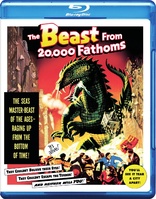
Movie rating
7.1 | / 10 |
Blu-ray rating
| Users | 4.5 | |
| Reviewer | 3.5 | |
| Overall | 3.5 |
Overview
The Beast from 20,000 Fathoms (1953)
An A-bomb test in the Arctic awakens The Beast from 20,000 Fathoms, and it makes New York City its stomping ground.
Starring: Paul Hubschmid, Paula Raymond, Cecil Kellaway, Kenneth Tobey, Donald WoodsDirector: Eugène Lourié
| Horror | 100% |
| Sci-Fi | 12% |
| Adventure | Insignificant |
Specifications
Video
Video codec: MPEG-4 AVC
Video resolution: 1080p
Aspect ratio: 1.33:1
Original aspect ratio: 1.37:1
Audio
English: DTS-HD Master Audio Mono (48kHz, 24-bit)
French: Dolby Digital Mono
Spanish: Dolby Digital Mono
Spanish: Dolby Digital Mono (Spain)
Subtitles
English SDH, French, Japanese, Spanish
Discs
25GB Blu-ray Disc
Single disc (1 BD)
Playback
Region free
Review
Rating summary
| Movie | 3.5 | |
| Video | 4.0 | |
| Audio | 4.0 | |
| Extras | 2.0 | |
| Overall | 3.5 |
The Beast from 20,000 Fathoms Blu-ray Movie Review
Jurassic Park: The Prequel
Reviewed by Michael Reuben October 26, 2015The first feature film to include a credit for legendary stop-motion animator Ray Harryhausen was 1953's The Beast from 20,000 Fathoms (or, simply, "Beast" for short). Beast is also the film that is generally credited with starting the long series of creature features in which popular culture reflected anxieties about the future of humanity in the atomic age. It's certainly true that the success of Beast, which was made independently, then acquired by Warner Brothers, prompted the greenlight for the studio's profitable feature Them!, which appeared the following year. Beast has also been claimed as an inspiration, or at least an encouragement, for Toho's Godzilla series, the first of which appeared in 1954. (Like Japan's "King of the Monsters", the giant lizard in Beast was initially conceived as having some sort of fiery breath, but the idea never progressed beyond concept art.) At its core, though, Beast is little more than a dinosaur movie, an indulgence by Harryhausen and his lifelong friend, Ray Bradbury, of their childhood fascination with the prehistoric behemoths and the same desire to see them brought to life that, forty years later, would make Steven Spielberg's Jurassic Park a cultural landmark. As Dr. Alan Grant says in the later film: "Dinosaurs and man, two species separated by 65 million years of evolution have just been suddenly thrown back into the mix together. How can we possibly have the slightest idea what to expect?" Harryhausen and Bradbury made a pretty good guess, and even though their dinosaur was an invented species (which solved certain practical problems, such as its ability to breathe underwater), they told much the same cautionary tale as Spielberg and novelist Michael Crichton. Meanwhile they and the audience could enjoy marveling at what was, for the time, the best realization of a dinosaur yet shown on the screen. Beast is one of the four films new to Blu-ray in Warner's Special Effects Collection. (It is also available singly.)
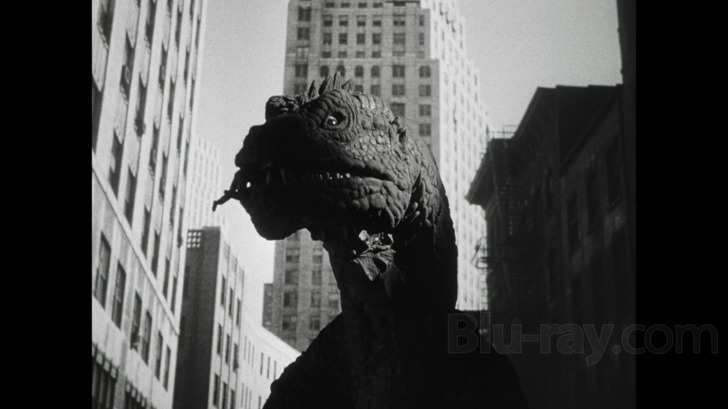
The script for Beast is credited to Lou Morheim (The Hunting Party) and Fred Freiberger (TV's The Wild Wild West). It was Harryhausen who noted the similarity to a previously published story by Bradbury, "The Fog Horn", thereby prompting the film's producers to buy the rights and credit the writer. Eugène Lourié (Gorgo) directed. The story begins at the North Pole, where a team of researchers detonate a nuclear bomb for an unidentified purpose. The explosion releases a dinosaur, later identified as a Rhedosaurus, from the ice in which it was frozen millions of years ago. Only two team members see the monster before it vanishes into the frozen waste. One of them is killed, and the other is transported back to New York with serious injuries. When he regains consciousness, no one believes his story. The survivor's name is Prof. Tom Nesbitt (Swiss actor Paul Hubschmid, who in those post-war years preferred to be known by the less Germanic surname "Christian"). Much of Beast shares the same narrative strategy that Spielberg would later use in Jaws, where a series of attacks and brief sightings—a ship here, a lighthouse there—are dismissed or explained away by the authorities, while an increasingly desperate Prof. Nesbitt, who knows otherwise, struggles to convince others that the threat is real. His search takes him to the world's leading paleontologist, Thurgood Elson (Cecil Kellaway, The Postman Always Rings Twice), who is eagerly anticipating his first vacation in thirty years and initially isn't interested in Nesbitt's fantastic story. But the scientist's comely assistant, Lee Hunter (Paula Raymond), is sufficiently intrigued to help Nesbitt identify the dinosaur he saw from drawings. When survivors of other "incidents" pick out the same drawing, even Elson gets curious. With the Rhedosaurus instinctively returning to its former home turf in the waters of the Atlantic, it is only a matter of time before it rears its head in New York harbor, in a shot that would become much imitated. In an interesting twist, however, the creature's most destructive power isn't its size or strength (although those are substantial) but the virulent prehistoric microbes in its blood stream, which cause an entire Army unit to sicken and collapse. The situation presents a novel challenge for the military force attempting to defend against the creature, because further use of their weapons risks spreading the germs and infecting millions more. In a final demonstration that Beast's subtext isn't about fear of the nuclear age, it's Prof. Nesbitt, the atomic scientist, who solves the riddle of how to beat the creature safely (with the help of an Army marksman played by a young Lee Van Cleef). The Rhedosaurus was an ancient threat, and it had always been there buried beneath the polar ice cap, waiting for the right conditions to let it loose. An earthquake could have released it, or a sufficient quantity of TNT. But destroying it required nuclear research and its breakthroughs. In Beast, it turns out to be a good thing that humanity split the atom.
The Beast from 20,000 Fathoms Blu-ray Movie, Video Quality 
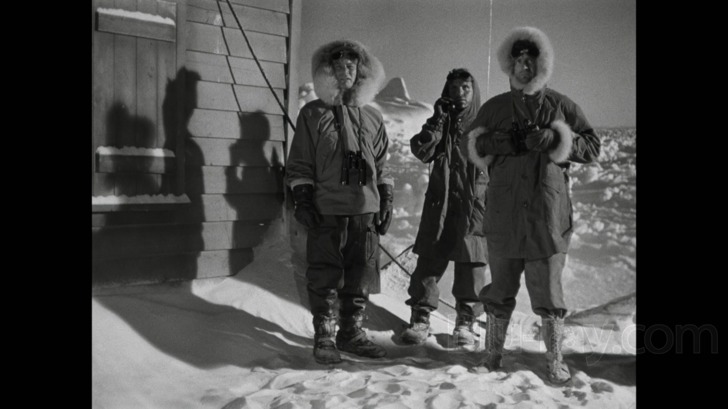
The Beast from 20,000 Fathoms was shot by John L. Russell (Hitchcock's Psycho). For Warner's 1080p, AVC-encoded Blu-ray release, the studio's MPI facility has created a new 2k scan from a fine-grain positive. As with the other films in Warner's Special Effects Collection, Beast's creature effects were optically superimposed into the finished film, so that shots in which the resurrected Rhedosaurus appears routinely contain portions that have suffered generational loss of detail and cannot look better than they do here. It's also worth noting how frequently effects supervisor Ray Harryhausen positioned his stop-motion model wholly or partially in shadow, and used water or smoke to obscure its artificiality. In later work in color, Harryhausen's work had advanced to the point where he could place his models in full illumination without camouflage. Within the limits of the source material, the Blu-ray image is very good: sharp and detailed, with solid blacks, well-delineated grays and a natural grain pattern. The Arctic snows are white, but the remaining scenes retain their natural texture and have not been artificially brightened to create a false sense of "pop". Like the other films in the Collection, Beast has been well encoded at a high bitrate, in this case 31.91 Mbps.
The Beast from 20,000 Fathoms Blu-ray Movie, Audio Quality 
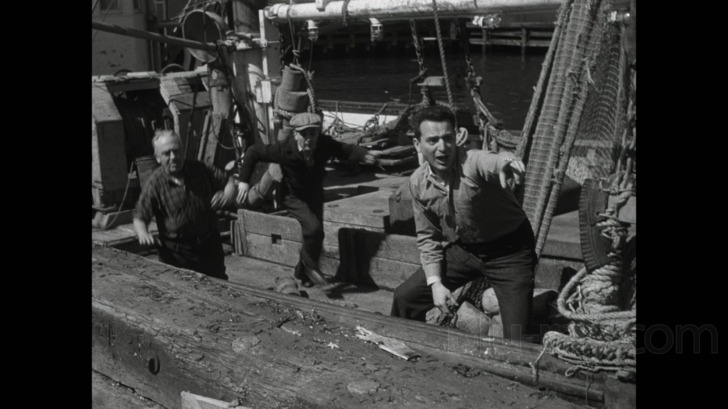
Beast's original mono soundtrack has been encoded in lossless DTS-HD MA mono, and it is remarkably effective for its era. Not only is the dialogue clear, but the all-important roar of the angry Rhedosaurus makes an appropriate impact (though it doesn't exactly rattle the room). The sounds of destruction wrought by the creature would be more dramatic in a contemporary mix, but they tell the story well enough. The score by David Buttolph (House of Wax) is a classic among creature features.
The Beast from 20,000 Fathoms Blu-ray Movie, Special Features and Extras 
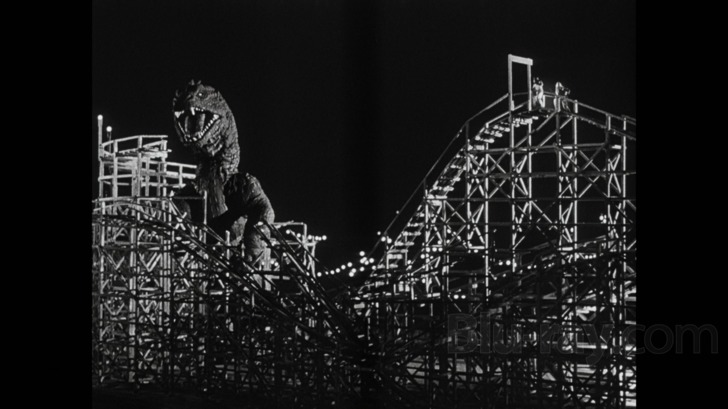
The extras have been ported over from Warner's 2003 DVD of The Beast from 20,000 Fathoms, except that the DVD contained additional trailers for films featuring Harryhausen's stop-motion animation.
- The Rhedosaurus and the Rollercoaster: The Making of "Beast" (480i; 1.33:1; 6:12): Harryhausen recalls his involvement in the project and how it launched his career.
- Harryhausen & Bradbury: An Unfathomable Friendship (480i; 1.33:1; 16:51): "In June 2003, living legends Ray Harryhausen and Ray Bradbury gathered with a few friends on the Warner Bros. Lot in Burbank, California to reminisce about their lifelong friendship and shared love of the fantastic." Both men were 82, but, as Bradbury says, they were still kids at heart. From the energy and enthusiasm they both display, it's no surprise that each one survived into his nineties.
- Armatures (480i; 1.33:1; 0:59): Culled from the same interview as "The Rhedosaurus and the Rollercoaster", this excerpt addresses a key technical element of Harryhausen's designs.
- Theatrical Trailer (480i; 1.33:1; 2:34): "Will science unleash the fearsome forces of Lost Worlds?"
The Beast from 20,000 Fathoms Blu-ray Movie, Overall Score and Recommendation 
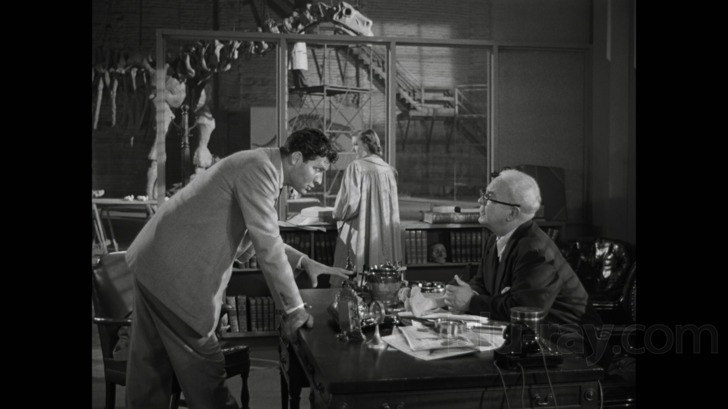
There's a little of Beast in every Godzilla film ever made and also in hybrids like Cloverfield. But the most direct successor is The Lost World, Spielberg's sequel to Jurassic Park, which has a third act that pays homage in numerous respects to Harryhausen's 1953 classic. In both films, a creature from a bygone era suddenly appears in a modern city (New York in Beast, San Diego in Lost World) and barrels its way through people and buildings as if they were so much forest. Both scenarios result from a child-like fascination with dinosaurs, except that no one in Beast is trying to capitalize on that fascination to create a theme park. Harryhausen and Bradbury worked in less cynical times. Highly recommended.
Similar titles
Similar titles you might also like

Them!
1954

20 Million Miles to Earth
1957

The Monster That Challenged the World
1957

It Came from Beneath the Sea
1955

The Deadly Mantis
1957

The Giant Claw
1957

Mega Shark vs. Crocosaurus
2010

Creature from the Black Lagoon 4K + 3D
1954

Mighty Joe Young
1949

The Thing from Another World
Warner Archive Collection
1951

The Black Scorpion
1957

The Blob 4K
Collector's Edition
1988

Fiend Without a Face
1958

Piranha 4K
Collector's Edition
1978

Attack of the Crab Monsters
1957

Sea Fever
2019

The Crawling Eye
1958

It! The Terror from Beyond Space
2K Restoration
1958

Tarantula
1955

Mega Shark vs. Giant Octopus
2009